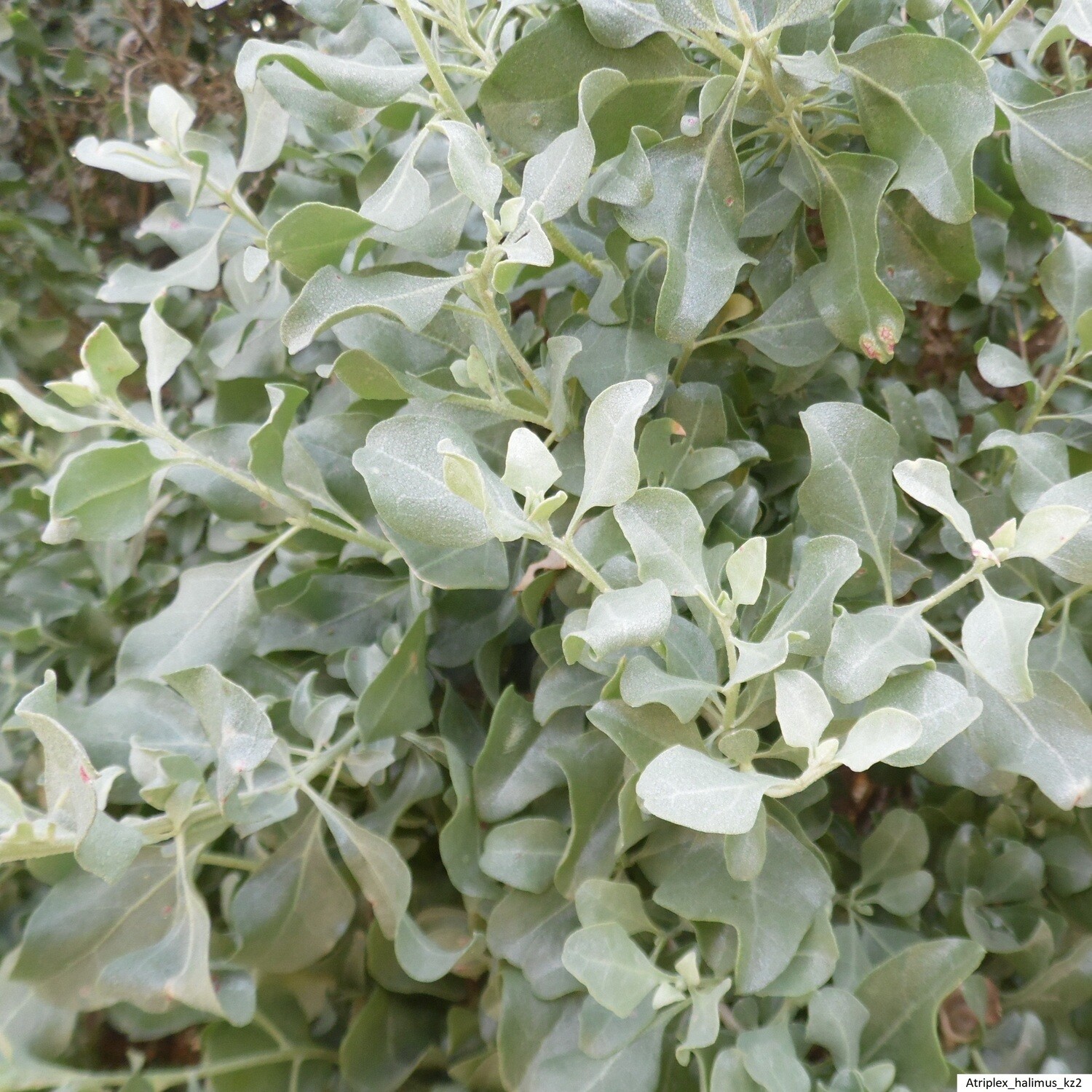jardimseco

Atriplex halimus
| Quantity | Price per item | Discount |
| 5 plants | €5,05 | 16% off |
Atriplex halimus is an evergreen halophytic shrub that grows up to 2 metres high and 2-3 metres wide. It is widely distributed in arid and semi-arid regions throughout the Mediterranean Basin, North and East Africa and the Arabian Peninsula. It is also known by the common names of sea pulsane, , sea orache, shrub orache, and silver orache, and is associated with coastal wetlands, but in dry or sandy soils. It is also hardy and can withstand frost (-5 and -10°C) but not when associated with wet soil conditions.
The dense, silvery-grey ovate leaves are the main feature of this plant, as the flowers, which appear in June and July, are of little garden interest. The species is monoecious (individual flowers are either male or female, but both sexes can be found on the same plant) and is pollinated by wind.
Atriplex halimus prefers unimproved, well-drained, poor soils and will not tolerate wet or fertile conditions, although it will grow well in very sandy soils. This is a plant that thrives in exposed locations, preferring full sun and will not do well in shade where it will quickly become weak and leggy, but if these criteria are met it is easy to grow. The growth habit is multi-stemmed and it makes a good hedge, responding well to pruning and shaping.
More Details
The leaves are both edible and used as fodder for grazing animals, particularly sheep and goats, and it is often grown as fodder on marginal land because of its tolerance to severe drought conditions, growing well in very alkaline and saline soils. In addition, A. halimus is a useful crop for improving these degraded and marginal lands because it contributes to the improvement of phytomass (total plant biomass), thereby helping to protect and improve the soil. It has a deep root system, which helps to stabilise the soil and reduce soil erosion, and the plant is an important contributor to functioning ecosystems, as reflected in its promotion of soil biota (the enormous diversity of organisms, including microorganisms (i.e. bacteria, fungi) and soil fauna (microscopic and macroscopic animals)).
As well as being a food crop for mammals and arthropods, it is also used as a salad and leaf vegetable in many parts of the world.
How to use our online shop
-
You can make an order by selecting plants with quantities and putting them in your Shopping Bag.
-
By placing an order you are not obligated to purchase the plants online and you will not be asked for any payment at this stage.
-
We will confirm prices, availability and delivery/collection dates with you by email.
-
Only when all the details of your order are agreed, will we send you an agreed Factura/Invoice and request payment from you.
-
Once an order is agreed we require a 50% payment to secure the plants. Plants in the shopping basket are not reserved until an order is placed.
-
Availability - the store contains 3 availability categories
-
Plants ready for despatch, collection within 14 days
-
Plants we have but they are still growing into their containers. These are offered for reservation and will be released once they are ready. An estimated date for their availability is given.
-
Plants that we only hold a limited stock of, or only propagate occasionally or on demand. This also includes plants we are going to propagate in the near future.
-
Read more on our plant availability and advance orders here
